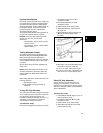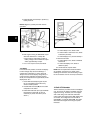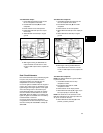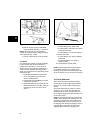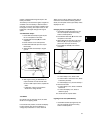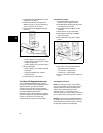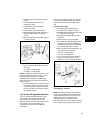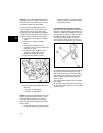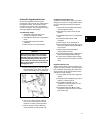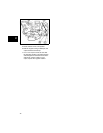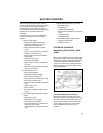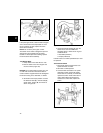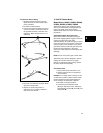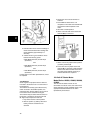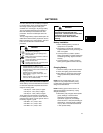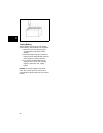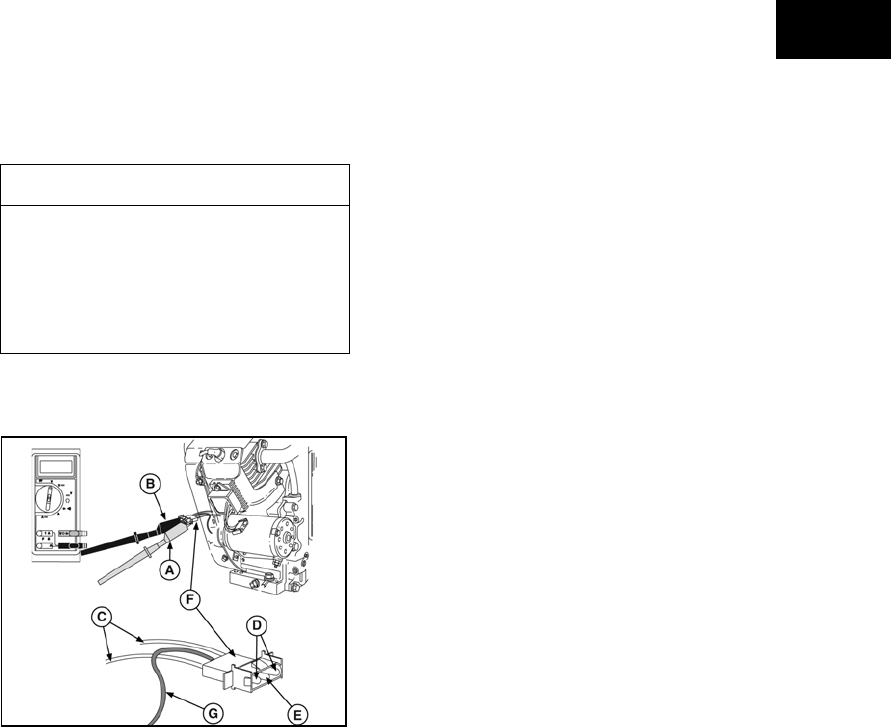
41
2
2
20 Amp DC Regulated Alternator
The 20 Amp regulated alternator system
provides AC current through two output leads to
the regulator-rectifier. The regulator-rectifier
converts the AC current to DC, and regulates
current to the battery. The charging rate will vary
with engine RPM and temperature.
Test Alternator Output
1. Temporarily disconnect stator wire
harness from regulator-rectifier.
2. Insert RED test lead into V Ω receptacle in
meter.
3. Insert BLACK test lead into COM
receptacle.
4. Rotate selector to AC Volts position.
5. Attach red (A, Figure 31) and black (B)
test lead probes to the yellow wire (C) AC
output terminals (D), of the connector (F).
Figure 31
6. If No or Low output is found, check for
bare wires or other defects. If shorted
leads are not visible, replace the stator.
7. With the engine running at 3600 rpm,
output should be no less than 26 volts.
DC Output Charging Wire Test
A simple test can be used to test the DC output
charging wire circuit. If a wiring problem exists, it
can be corrected before testing the regulator-
rectifier.
1. Leave stator wire harness disconnected
from the regulator-rectifier.
2. Equipment key switch must be in OFF
position.
3. Insert RED test lead into V Ω receptacle in
meter.
4. Insert BLACK test lead into COM
receptacle.
5. Rotate selector to DC Volts position.
6. Attach red test lead probe (A, Figure 31) to
the red wire (G) DC output terminal (E) of
the connector.
7. Attach black test lead probe (B) to
negative battery terminal.
8. Turn equipment key switch to ON position.
Meter should display Battery Voltage.
9. If meter does not display battery voltage,
check for blown fuse or broken or shorted
wires.
Regulator-Rectifier Test
The DC Shunt #19359 must be installed on the
negative (-) battery terminal to avoid blowing the
fuse in the meter when testing the output of the
20 amp system. All connections must be clean
and tight for correct readings.
1. Connect stator wire harness to regulator-
rectifier.
2. Install DC Shunt #19359 (D, Figure 32) on
negative (-) battery terminal.
3. Insert RED test lead (A) into V Ω
receptacle in meter and connect to red
post terminal on shunt (E).
4. Insert BLACK test lead (B) into COM
receptacle in meter and connect to black
post on shunt (C).
NOTICE
Attach meter test leads to the AC output
terminals (yellow wires) in the connector
BEFORE starting the engine. If the stator is
grounded (defective) and the meter test
leads contact the center DC output pin (red
wire) in the connector, arcing could occur,
damaging the wire.



